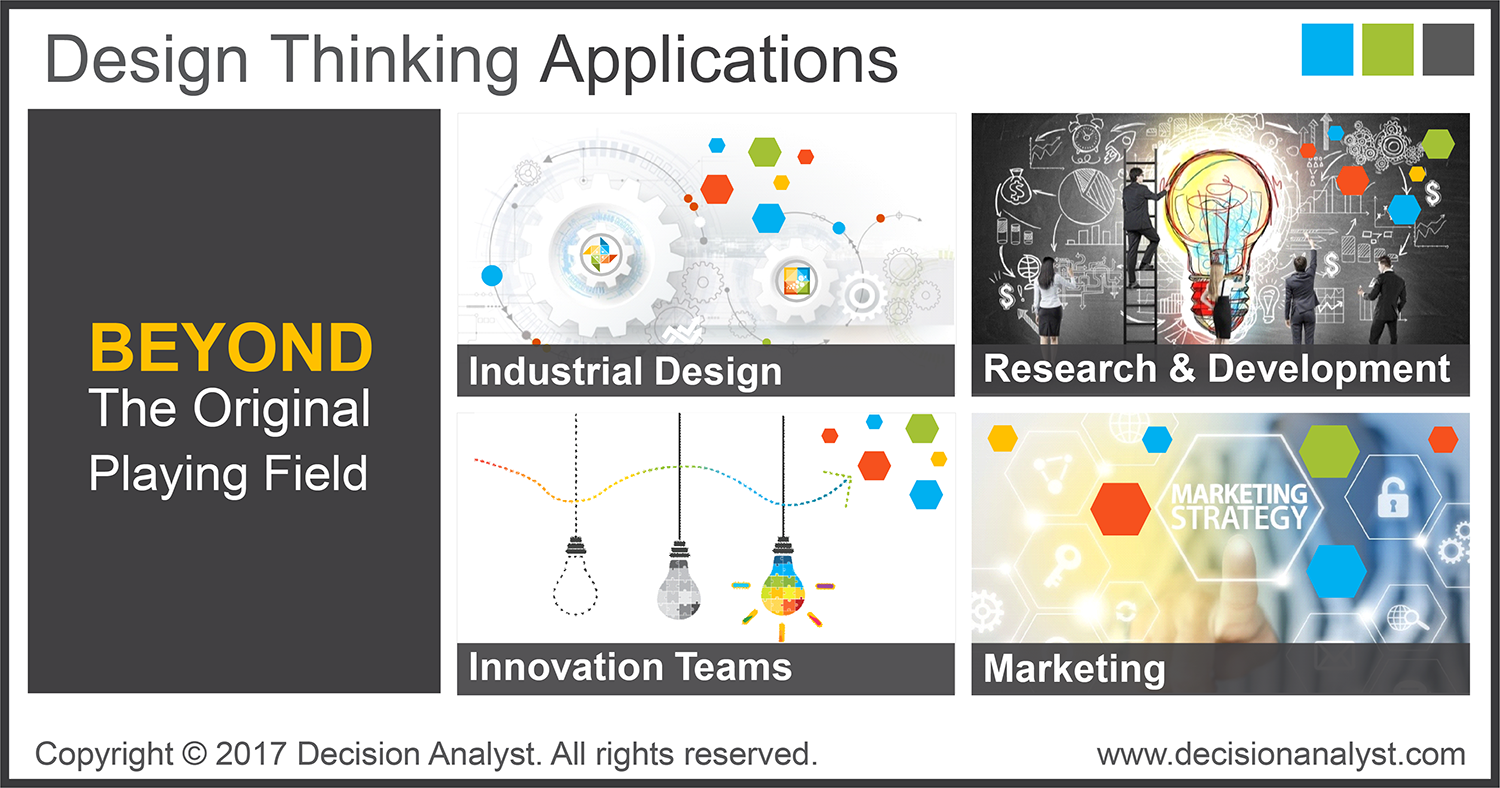Insider Series Webinar
Design Thinking For The Rest Of Us
presented by Felicia Rogers and Clay Dethloff
In this webinar, we will discuss the role of qualitative research, projective techniques, ideation, and concept evaluation have on new product development.
Every aspect of business seems to be moving faster and faster. Creativity is essential to keeping pace without sacrificing on quality of work. Design Thinking is an interesting development process that’s being widely used to quickly invent or improve new products and services. Integrating these practices into your NPD process may feel more familiar than you think.
Essentially, it’s a very purposeful pathway for developing something new or enhancing or refining something that already exists. Although some early versions of this approach may date as far back as the 1950s or 60s, the current version and term Design Thinking were originated roughly 25 years ago by the Stanford University Institute of Design, now dubbed the D.School. It’s a process for designers and innovation specialists to both guide their creation process and keep them grounded in the needs of the eventual user of the “product,” whether that’s an architectural structure, an interior layout, a durable or consumable good, or a package. Over the past 5 to 10 years, the process has experienced tremendous growth in awareness and widespread adoption far beyond the design community and into the mainstream business world.
The truth is, the elements of this process are not new. We believe the key to Design Thinking’s spread is three-fold. First, the steps are being fairly seamlessly integrated, moving along a pathway from beginning to end, without lifting the pencil, so to speak. Second, the focus is very intentionally always on the end users and their needs. This helps the development teams stay grounded in what the consumer is looking for or what would benefit them, which, if done well, can ultimately translate into quicker and faster wins. Which is the third element of Design Thinking’s popularity. The process often moves rather quickly. So let’s begin to look at each of the modes, and how they are aligned with traditional research methods.

Contact Decision Analyst
If you would like a pdf copy of the presentation please contact either Felicia Rogers, Executive Vice President, he can be emailed at frogers@decisionanalyst.com or Clay Dethloff, Senior Vice President of Qualitative Research, he can be emailed at cdethlo@decisionanalyst.com. Both presenters may be reached at 1-800-262-5974 or 1-817-640-6166.

